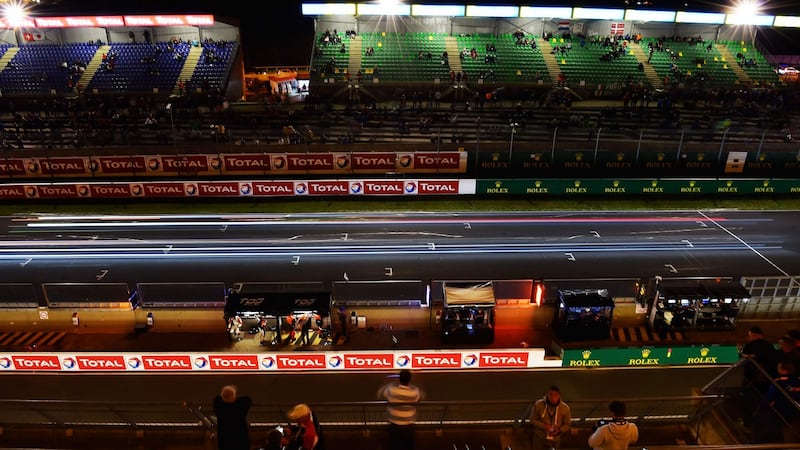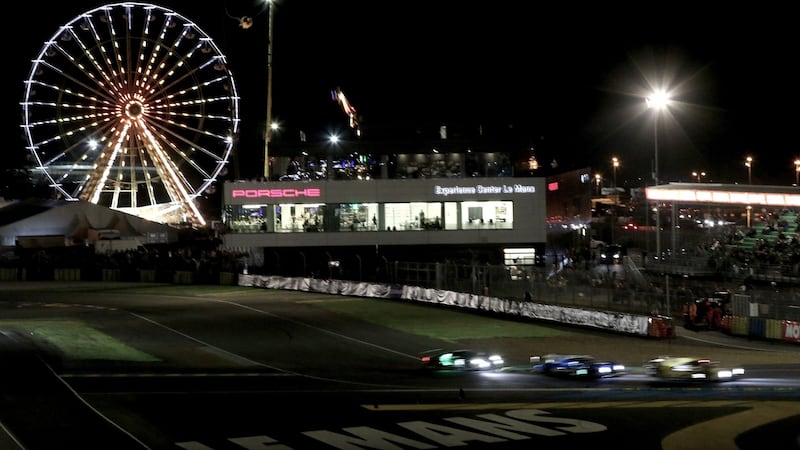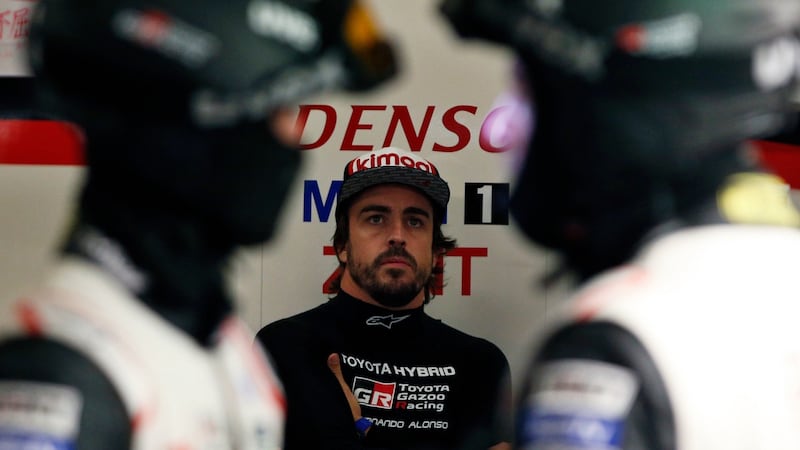Toyota has finally achieved its long-held ambition of winning the Le Mans 24hrs, following years of heartbreak and near-misses at the French endurance classic. This year, though, Toyota's victory never looked anything less than assured in spite of the possibility of a last-minute penalty for spinning the wheels of the leading car in the pitlane (an offence for which other cars were penalised) and a fuel-shortage drama, and stop-go penalties, for the second-placed No.7 car.
Toyota made its Le Mans debut way back in 1977 with a TOMS-run Celica coupe, and has since then been something of a cursed brand in the famous French endurance race. In 1999, it came agonisingly close with the astonishing GT1-spec TS020, only to be stymied by a flat tyre with in the final hour of the race. More recently, in 2016, Toyota came within one single lap of winning the 24hrs, only for its leading car to fail with minutes of the event left to run. It was a heartbreaking moment for the Japanese brand and team, and for the millions of motor racing fans worldwide.
Flawless hybrid
It's easy to say now, in the afterglow of victory, but the winning hybrid-engined TS050 LMP1-spec prototype ran more or less faultlessly throughout, with that victorious No.8 car, piloted by Sebastian Buemi, Kazuki Nakajima, and Fernando Alonso, never looking anything other than supreme. Most of the headlines will be dedicated to Alonso's part in the win, as part of his continuing quest to add Le Mans and the Indy 500 to his F1 world titles, but while both Buemi and Alonso put in commanding performances, this was Nakajima's win.
The Japanese driver had suffered the agony of that last-lap breakdown in 2016, and early-doors problems last year, and so for him that podium champagne will have tasted so much sweeter than for the others. Winning Le Mans is always that little bit more special than other, lesser, races, but for Nakajima, this one is also much-deserved payback. (Cynics might say that the penalties for the other Toyota were a way of making damn sure it was the Alonso car that won, but perhaps that’s just conspiracy theory stuff. Alonso himself was certainly at pains to repeatedly point out that this was a massive team effort, not just a solo superstar performance.)
Irish interests
Irish interests were limited to Matthew Griffin driving to a top-ten class finish the Clearwater Racing Ferrari 488, and Charlie Eastwood in the TF Racing Aston Martin - which had a couple of visits to the gravel trap and eventually retired - both in the GTE Am class. Oh, and a visit to the Porsche pits by actor Michael Fassbender.
For Toyota, though? There will be satisfaction, of course, and the team put in a flawless performance, and managed to sidestep the reliability and accident issues that have plagued it in the past, but unquestionably there will be a bittersweet taste because there was no serious opposition in the top class LMP1 category.

With Porsche, Audi, and Peugeot all having packed up and left Le Mans in the past few years, Toyota's only challenge came from a hodge-podge of privately-entered cars running to more affordable privateer rules. Swiss-based Rebellion Racing had a pair of fast Gibson-engined cars, but their performance was more fitful, and in reality Toyota's opposition was more luck, reliability, and the clock than it was any other car.
Look to the future
Further down the field though, there was a glimpse at what Le Mans might now become again. Ahead of the race, the World Endurance Championship (WEC) outlined new regulations for the top tier of endurance car racing, and it’s very much a case of back to the future. In the mid 1990s, when car makers abandoned the expensive prototype class due to rising costs, Le Mans switched to road-car based racers (McLaren F1, and Ferrari F40 among them) which kicked off a decade of brilliant racing, eventually leading to the astonishing GT-1 spec cars.
Now, WEC wants to return to those days, starting in 2020, with racers based on (or at least looking externally like) road-going hypercars such as Aston Martin’s Valkyrie, McLaren’s Senna, and Ferrari’s LaFerrari. Fitted with a more basic generic hybrid system (rather than Toyota’s expensive home-grown system) the idea is to reduce budgets to around a quarter of that needed to run a current LMP1 car, and to make the styling and look of the cars more important than their aerodynamic performance.
FIA president Jean Todt said: "The new regulations for the FIA World Endurance Championship, which come into effect for the 2020/21 season, are the result of hard work between members of the FIA, ACO, manufacturers and teams. This will provide endurance racing with a long-term, stable platform while continuing to offer a cost-effective stage to showcase future technologies."

Cost-effective racing
WEC boss Gerard Neveu added that cost-effectiveness was key to the new rules. "The direction for the new regulations announced today jointly by the ACO and the FIA is a supremely positive one," said Neveu. "The 2020-24 regulations are, for competitors, both technically interesting and sustainable, with the controlled budgets being a key factor. We are confident that we will welcome an increased number of world-class manufacturers and international teams to the WEC and that all the elements are in place for them to be able to compete at the highest level, with the pinnacle, of course, being the 24 Hours of Le Mans." Toyota has already indicated that it might be interested in running a version of its Gazoo Racing Concept Car, essentially a road-going TS050 race car, when the new regulations come into force. McLaren, Aston Martin, Ford, and Ferrari all also had a hand in framing the new regulations.
Certainly road-based cars provided the bulk of the thrills at the 2018 Le Mans, not for the first time upstaging the performance of the vastly more expensive LMP1 cars. While Aston Martin has rather gone backwards with its new Vantage (utterly gorgeous but slow thanks to a lack of time to develop it before the event) the rest of Porsche stamped its authority on the race early in the week with some stunning qualifying laps with the 911 RSRs the field was fast and running close together.

Porsche stamped its authority on the race early in the week with some stunning qualifying laps with the 911 RSRs (two in gloriously retro 1970s and 1908s colour schemes), but the Ford GTs managed to keep them at least mostly honest during the race, with some astonishingly hard-edged driving between Porsche's Fred Makoweicki and Ford's Sebastian Bourdais (both of them French natives) as they traded places and, almost, paint early on Sunday morning in a battle for third place in the GTE Pro category.
Ferrari and Chevrolet Corvette racers couldn't mount a consistent challenge to the Fords and Porsches, but were fast enough at times to thrill, while BMW's new M8 GTE, making its debut at the race alongside the road-going 8 Series being shown off in the paddock for the first time, was occasionally rapid, but suffered too many teething troubles and, eventually, a trip backwards into the wall for the No.82 car.
Alonso’s triple crown in sight
The win for Toyota is significant, and not just because it's long overdue. It's another marker in the ground of the march of hybrids (Toyota Ireland took time during the race to tweet that diesel car sales in Ireland dropped below 50 per cent of the market in May, while hybrids grew to seven per cent), and of course a major notch in the belt of Fernando Alonso as he seeks to become the most complete modern racing driver of all, and to follow in the wheeltracks of Graham Hill, the only other to have completed racing's Triple Crown of race wins.

It’s also, effectively, the end of the current era of prototype racing. Le Mans 2019 will run to the same regulations as this year and, all things being equal, will probably be a victory lap for Toyota - a deserved one at that. From 2020, though, with luck we will be entering a fantastic new era for sports car and endurance racing, where the road-going hypercars of which we dream become racing cars that we can cheer.











